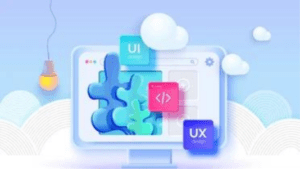Web design has come a long way in terms of accessibility in recent years. With advancements in technology and a growing awareness of the importance of inclusion, designers are now making it a priority to create websites that are accessible to everyone, regardless of their abilities. Microsoft is a leader in this effort, designing websites that prioritize accessibility and promote inclusion. In this blog post, we will explore how Microsoft’s web design advances accessibility standards and why it is crucial to design for inclusion.
Section 1: Understanding Accessibility
To understand why accessibility is crucial, we must first define what it means. Accessibility refers to designing websites, products, and services in a way that ensures everyone can use them, regardless of their abilities. Accessibility is not limited to people with disabilities but includes anyone who may face barriers to accessing information or services online.
There are several types of disabilities, including visual, auditory, physical, and cognitive impairments. Web designers must consider each of these when designing a website to ensure that everyone can access the content equally. For example, a visually impaired person may use a screen reader to navigate a website, while a person with a physical disability may use a keyboard to navigate instead of a mouse.
Section 2: Microsoft's Commitment to Inclusion
Microsoft is committed to designing products and services that are inclusive and accessible to everyone. The company’s mission is to “empower every person and every organization on the planet to achieve more.” To achieve this mission, Microsoft has made accessibility a core focus of its design philosophy.
One of the ways Microsoft is advancing accessibility standards is through its Inclusive Design Toolkit. The toolkit is a comprehensive guide that provides designers with the knowledge and tools they need to create inclusive products and services. The toolkit covers topics such as designing for cognitive diversity, using inclusive language, and creating accessible user interfaces.
Microsoft also provides training and resources for its employees to ensure they understand the importance of accessibility and how to design for it. The company has an accessibility center that offers training courses, workshops, and resources on accessibility standards and best practices.
Section 3: Microsoft's Web Design Advancements
Microsoft’s web design advancements are evident in its website design. The company’s website is designed to be accessible to everyone, regardless of their abilities. Here are some of the ways Microsoft’s web design advances accessibility standards:
Keyboard Navigation: Microsoft’s website can be navigated using only the keyboard. This means that people with physical disabilities who cannot use a mouse can still access all the website’s features and content.
Alt Text: All images on Microsoft’s website have descriptive alt text. Alt text is a short description of the image that can be read by screen readers. This ensures that visually impaired people can understand the content of the image.
Color Contrast: Microsoft’s website uses high color contrast, making it easier for people with visual impairments to read the text.
Closed Captions: Microsoft provides closed captions for all its videos, making them accessible to people with hearing impairments.
Clear Navigation: Microsoft’s website has clear and consistent navigation, making it easy for all users to find what they are looking for.
Section 4: The Importance of Designing for Inclusion
Designing for inclusion is essential for several reasons. First, it ensures that everyone can access the content and services provided online. This includes people with disabilities, people who speak different languages, and people with low literacy levels.
Second, designing for inclusion promotes diversity and eliminates bias. When designers create products and services with inclusion in mind, they consider a broad range of user needs and perspectives. This leads to more diverse and innovative solutions that benefit everyone.
Third, designing for inclusion is a legal requirement in many countries. In the United States, for example, the Americans with Disabilities Act (ADA) requires that all websites and mobile applications be accessible to people with disabilities. Failure to comply with these accessibility standards can result in legal action and penalties.
Finally, designing for inclusion is simply the right thing to do. Everyone deserves equal access to information and services, and it is our responsibility as designers to ensure that our designs meet these standards.
Section 5: Best Practices for Designing Inclusive Websites
Now that we have explored the importance of designing for inclusion let’s take a closer look at some best practices for designing inclusive websites:
Use Clear and Simple Language: Use clear and simple language that is easy to understand for people with low literacy levels or who speak different languages.
Provide Alternative Text: Provide alternative text for all images, videos, and other media so that people who are visually impaired can understand the content.
Use High Contrast Colors: Use high contrast colors for text and backgrounds to make it easier for people with visual impairments to read the content.
Consider Navigation: Design clear and consistent navigation to make it easy for all users to find the information they need.
Test Your Design: Test your design with users who have different abilities to identify any barriers or issues that need to be addressed.
Provide Closed Captions and Transcripts: Provide closed captions and transcripts for all videos and audio content to make it accessible for people with hearing impairments.
Consider Cognitive Diversity: Consider the needs of people with cognitive impairments, such as dyslexia or ADHD, when designing your website.
Allow for Customization: Allow users to customize the website, such as adjusting font size or color, to meet their individual needs.
Section 6: Tools and Resources for Inclusive Web Design
Designing for inclusion may seem like a daunting task, but there are many tools and resources available to help you. Here are a few examples:
Accessibility Guidelines: The Web Content Accessibility Guidelines (WCAG) provide a comprehensive set of guidelines for making websites accessible to people with disabilities.
Accessibility Checkers: There are many accessibility checkers available that can help you identify accessibility issues on your website. Some popular options include the WAVE Accessibility Checker, Axe Accessibility, and Site improve.
Assistive Technologies: Assistive technologies, such as screen readers and speech recognition software, can help people with disabilities access online content. Familiarizing yourself with these technologies can help you design more inclusive websites.
User Testing: Conducting user testing with people who have disabilities can help you identify any barriers or issues with your design. Consider partnering with disability organizations or advocacy groups to find participants for your user testing.
Inclusive Design Toolkit: Microsoft’s Inclusive Design Toolkit provides practical guidance and resources for designing more inclusive products and services.
Section 7: The Future of Inclusive Web Design
As technology continues to advance, the field of inclusive web design is likely to evolve as well. Here are a few trends to keep an eye on:
Artificial Intelligence (AI): AI has the potential to revolutionize the field of inclusive web design. For example, AI-powered image recognition can help automatically generate alternative text for images, making them more accessible for people with visual impairments.
Virtual and Augmented Reality (VR/AR): VR and AR technologies offer new opportunities for creating more inclusive experiences. For example, virtual environments can be designed to be more accessible for people with mobility impairments.
Multimodal Interfaces: As technology advances, we may see an increase in the use of multimodal interfaces, which allow users to interact with devices using a combination of different inputs, such as voice commands and touch.
Inclusive Design Thinking: Inclusive design thinking is a growing trend that emphasizes the importance of designing for diversity and inclusion from the start of the design process.
As designers, it’s important to stay informed about these trends and continue to adapt our design practices to meet the needs of all users. By embracing the principles of inclusive design, we can create a more equitable and inclusive online experience for everyone.
Section 8: Case Studies in Inclusive Web Design
Looking at real-life examples of inclusive web design can provide valuable insights into how these principles can be applied in practice. In this section, we will explore several case studies of companies that have prioritized accessibility and inclusivity in their website designs, including Apple, Target, and Starbucks.
Section 9: The Role of Government in Promoting Inclusive Web Design
Governments play an important role in promoting inclusive web design through legislation and regulation. In this section, we will examine the role of government in setting accessibility standards and ensuring that websites comply with these standards. We will also look at the impact of recent legal cases related to web accessibility, such as the landmark case against Domino’s Pizza.
Section 10: Overcoming Common Challenges in Inclusive Web Design
Designing for inclusion can present unique challenges, such as the need to balance accessibility with aesthetics and functionality. In this section, we will explore some common challenges in inclusive web design and provide practical tips for overcoming them.
Section 11: The Business Case for Inclusive Web Design
In addition to being the right thing to do, designing for inclusion can also have significant business benefits. In this section, we will explore the business case for inclusive web design, including increased customer loyalty, expanded market reach, and improved brand reputation.
Section 12: The Future of Accessibility Advocacy and Inclusive Web Design
As the field of inclusive web design continues to evolve, so too will the advocacy efforts of disability organizations and accessibility advocates. In this section, we will explore the future of accessibility advocacy and inclusive web design, including emerging technologies and new strategies for promoting inclusion and accessibility online.
In conclusion, designing for inclusion is essential to ensure that everyone can access the content and services provided online. With the help of tools and resources, designers can create websites that prioritize accessibility and promote inclusion. By following best practices for designing inclusive websites, we can create a more diverse and equitable online experience for everyone. The future of inclusive web design is bright, with emerging technologies and new strategies making it easier than ever to design for accessibility and inclusivity.



